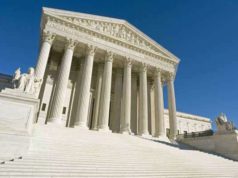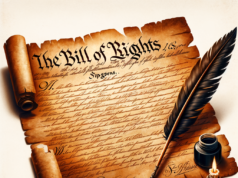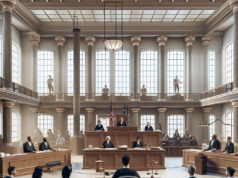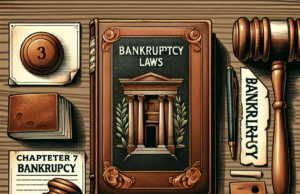The Supreme Court of the United States has long been a pivotal institution in the American legal landscape, wielding the power to interpret the Constitution and influence the trajectory of the nation. Through its rulings, the Court has not only shaped legal precedents but has also reflected and propelled societal changes. This article delves into the profound impact of landmark Supreme Court decisions, exploring their historical significance and contemporary relevance in various aspects of American life.
Understanding the Role of the Supreme Court in Shaping American Law and Society
The Supreme Court serves as the highest judicial authority in the United States, tasked with interpreting the Constitution and adjudicating disputes that arise under federal law. Its decisions can have far-reaching implications, influencing not only legal standards but also societal norms and values. By exercising judicial review, the Court has the power to invalidate laws and executive actions that it deems unconstitutional, thereby acting as a check on the legislative and executive branches of government. This role is crucial in maintaining the balance of power within the federal system and ensuring that individual rights are protected against potential government overreach. The Court’s interpretations of the Constitution often reflect the prevailing social attitudes of the time, making it a barometer of American society’s evolution.
Landmark Supreme Court Cases: A Historical Overview of Transformative Decisions
Throughout its history, the Supreme Court has rendered numerous landmark decisions that have fundamentally altered the legal landscape of the United States. Cases such as Marbury v. Madison (1803) established the principle of judicial review, while Brown v. Board of Education (1954) declared racial segregation in public schools unconstitutional, marking a significant turning point in the fight for civil rights. Other notable cases, like Roe v. Wade (1973), addressed issues of personal liberty and privacy, igniting national debates that continue to resonate today. Each of these decisions not only resolved specific legal questions but also set precedents that influenced subsequent rulings and shaped public policy, demonstrating the Court’s role as a catalyst for change.
The Civil Rights Movement and the Supreme Court: Key Rulings That Advanced Equality
The Supreme Court played a crucial role in advancing civil rights in America, particularly during the mid-20th century. Landmark rulings such as Brown v. Board of Education dismantled the legal framework of segregation, affirming the principle that “separate but equal” is inherently unequal. Additionally, cases like Loving v. Virginia (1967) invalidated laws prohibiting interracial marriage, furthering the cause of equality. The Court’s decisions during this era not only provided legal victories for marginalized groups but also galvanized public support for the civil rights movement, highlighting the judiciary’s capacity to effect social change. These rulings underscored the importance of the Court as a guardian of individual rights and a promoter of social justice.
Economic Policies and the Supreme Court: Decisions That Reshaped American Commerce
The Supreme Court has also significantly influenced American economic policies through its rulings on commerce and regulatory practices. Cases such as Gibbons v. Ogden (1824) established the federal government’s authority to regulate interstate commerce, laying the groundwork for a unified national economy. In more recent times, decisions like Citizens United v. FEC (2010) transformed the landscape of campaign finance, allowing corporations and unions to spend unlimited amounts on political advertising. These rulings reflect the Court’s role in navigating the complex interplay between government regulation and free enterprise, often sparking debates about the balance between economic freedom and public interest.
The Balance of Power: Supreme Court Cases That Defined Federal and State Authority
The Supreme Court has been instrumental in defining the balance of power between federal and state governments, shaping the federalist structure of the United States. Landmark cases such as McCulloch v. Maryland (1819) affirmed the supremacy of federal law over state law, while United States v. Lopez (1995) marked a significant limitation on Congress’s power under the Commerce Clause. These decisions illustrate the Court’s role in interpreting the Constitution’s allocation of powers, often reflecting the political and social contexts of their time. By delineating the boundaries of federal and state authority, the Supreme Court has played a critical role in maintaining the federal system and ensuring that both levels of government operate within their constitutional limits.
Contemporary Implications: How Supreme Court Decisions Continue to Influence America Today
The impact of Supreme Court decisions extends far beyond their immediate legal implications, influencing contemporary American society in profound ways. Recent rulings on issues such as same-sex marriage (Obergefell v. Hodges, 2015) and healthcare (National Federation of Independent Business v. Sebelius, 2012) have sparked nationwide discussions about equality, individual rights, and the role of government in personal matters. As societal values continue to evolve, the Supreme Court remains a critical player in addressing emerging legal challenges and interpreting the Constitution in light of modern realities. The ongoing debates surrounding issues like abortion rights, voting access, and campaign finance underscore the Court’s enduring relevance in shaping public policy and societal norms in the United States.
The Supreme Court’s decisions have undeniably shaped the course of American history, influencing everything from civil rights to economic policies and the balance of power within the government. As the nation continues to grapple with complex legal and social issues, the Court’s role as an arbiter of justice remains vital. Understanding the historical context and implications of landmark rulings not only enriches our appreciation of the judiciary’s impact but also underscores the importance of an informed citizenry in safeguarding the principles of democracy and justice that define the United States.

























